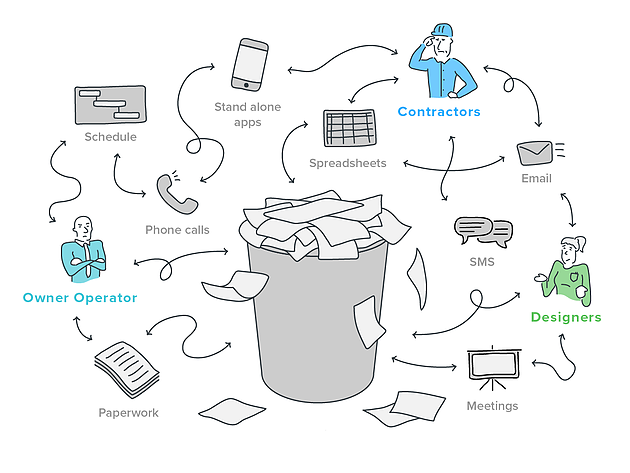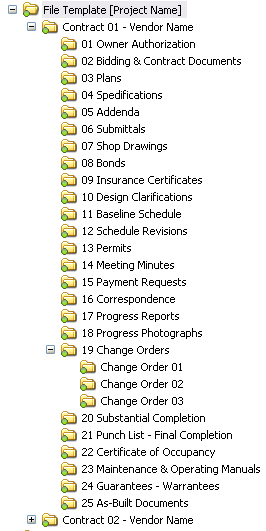Unlocking Efficiency: The Advantages of Construction Document Management Operating Systems
Unlocking Efficiency: The Advantages of Construction Document Management Operating Systems
Blog Article
Enhancing Operations Effectiveness: Architect's Specialist Approaches for Construction Record Monitoring
In the realm of building layout and construction, the thorough monitoring of documents stands as a cornerstone for job success. These methods not just make sure smooth task progression however additionally hold the vital to opening boosted performance and accuracy in the detailed world of building and construction file monitoring.
Trick Record Company Strategies
When taking care of building and construction records, among the crucial methods that designers utilize is developing a effective and methodical organization system. This system normally includes categorizing files based on their kind, such as illustrations, specs, agreements, and allows. By producing distinct and clear groups, designers can rapidly locate specific details when required, saving time and reducing errors in the construction procedure.
Within each category, designers better organize papers by developing subfolders or utilizing numbering systems to signify revisions or variations (construction document management). This hierarchical structure makes certain that the most present and pertinent info is conveniently available while keeping a document of changes made throughout the job timeline
Moreover, engineers often use electronic paper management platforms that provide functions like keyword search features, variation control, and accessibility constraints to boost organization and collaboration among job stakeholders. These devices simplify the record access procedure, advertise real-time updates, and promote smooth interaction, inevitably contributing to the general success of the building job.
Collaborative Platform Combination
To enhance file management efficiency in building jobs, designers seamlessly integrate collaborative platforms to boost interaction and enhance sychronisation among project stakeholders. By leveraging joint systems such as task administration software program, cloud-based storage space systems, and communication tools, engineers can develop a central hub for all project-related documents and interaction networks. These platforms allow staff member to gain access to, testimonial, and work together on papers in real-time, reducing delays and the threat of mistakes connected with traditional record monitoring approaches.
Collaborative platform assimilation also cultivates transparency and responsibility within the task team, as all stakeholders have presence right into the most up to date job updates and alterations. By streamlining interaction and document sharing, designers can make sure that all employee are functioning from one of the most up-to-date info, minimizing the opportunities of problems or misunderstandings occurring because of obsolete records.
Moreover, joint platforms enable seamless collaboration between designers, service providers, clients, and other project stakeholders, promoting a much more natural and efficient project workflow. By damaging down interaction obstacles and helping with info exchange, designers can drive efficiency and advancement in building and construction tasks, inevitably leading to successful project outcomes.
Version Control Ideal Practices
Applying reliable variation control techniques is critical for keeping record precision and uniformity in building and construction tasks. By developing a clear system for handling alterations, task groups can make certain that every person is functioning from the most up-to-date documentation, reducing the threat of mistakes and inconsistencies during the construction stage.
Among the crucial best practices for variation control is to appoint special identifiers to each document variation. This can be accomplished my sources by utilizing a numbering system or date stamp that clearly indicates the order of alterations. By clearly labeling each model, team participants can conveniently track the progression of the document and recognize the most current variation.

Automation Tools for Efficiency

Paper control software, like Procore or PlanGrid, systematizes project paperwork, making it quickly obtainable to all stakeholders. These systems allow for real-time collaboration, version control, and automated backups, securing versus data loss. Additionally, Building Info Modeling (BIM) software application automates the generation of building illustrations and makes certain that changes are synchronized across all related documents.
Integrating automation tools with cloud storage space options additionally boosts access and protection. By automating the record monitoring procedure, job groups can focus their effort and time on value-adding activities, ultimately improving productivity and project outcomes.
Secure Information Monitoring Solutions
Effectively guarding and handling task data is extremely important in the building and construction market to make sure privacy and integrity throughout the job lifecycle. Building firms can make use of encrypted cloud storage services to firmly share site here and keep task files with accredited employees.
Moreover, utilizing digital civil liberties management (DRM) tools includes an added layer of safety and security by protecting against the unauthorized distribution or duplication of task documents. Routine data backups are necessary to mitigate the danger of information loss as a result of unforeseen situations like equipment failings or cyber-attacks. Joint platforms with built-in safety and security functions make it possible for seamless communication and data sharing amongst task employee while maintaining use this link data stability.
Final Thought
To conclude, applying key file organization methods, incorporating collaborative platforms, practicing version control best practices, utilizing automation tools, and embracing protected information administration options are crucial techniques for improving operations efficiency in construction document management. These expert strategies can streamline procedures, boost interaction, make sure accuracy, and preserve data security throughout the construction job lifecycle.
In the realm of architectural design and construction, the meticulous monitoring of records stands as a keystone for job success. These techniques not only ensure smooth task progression but also hold the crucial to unlocking enhanced performance and accuracy in the elaborate world of building file management.
To maximize file management performance in building projects, engineers flawlessly integrate collective systems to enhance communication and simplify sychronisation amongst job stakeholders. These systems allow team members to access, evaluation, and collaborate on documents in real-time, lowering hold-ups and the threat of errors associated with standard file monitoring techniques.
Making use of automation tools in building and construction document monitoring dramatically improves efficiency and enhances procedures for project groups. construction document management.
Report this page